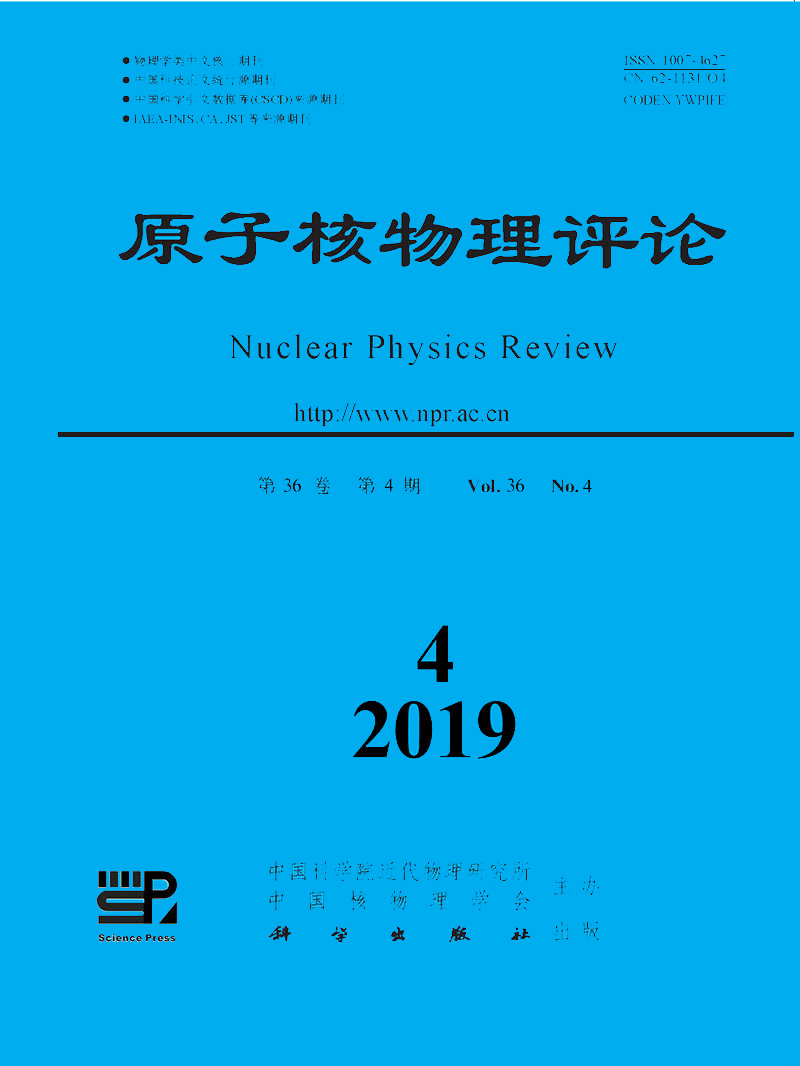YUAN Xuelan, WANG Lei, LIU Xin, PAN Jie, YU Yunqiang. Design of Digital Anti-coincidence γ Spectrometer System Based on FPGA[J]. Nuclear Physics Review, 2019, 36(4): 456-461. doi: 10.11804/NuclPhysRev.36.04.456
| Citation:
|
YUAN Xuelan, WANG Lei, LIU Xin, PAN Jie, YU Yunqiang. Design of Digital Anti-coincidence γ Spectrometer System Based on FPGA[J]. Nuclear Physics Review, 2019, 36(4): 456-461. doi: 10.11804/NuclPhysRev.36.04.456
|
Design of Digital Anti-coincidence γ Spectrometer System Based on FPGA
- 1.
College of Nuclear Technology and Automation Engineering, Chengdu University of Technology, Chengdu 610051, China;
- 2.
Institute of radiation medicine, Academy of Military Medical Sciences, Beijing 100850, China
Funds:
Applied Basic Research Program of Sichuan Province (2018JY0181);National Natural Science Foundation of China (41874121)
- Received Date: 2019-04-22
- Rev Recd Date:
2019-07-05
- Publish Date:
2019-12-20
-
Abstract
In this work, we designed an FPGA-based digital anti-coincidence gamma-ray spectrometer system to reduce the effect of the natural background radiation and Compton scattering on detection of the low-level radioactivity. In this system, the anti-coincidence detector consists of a NaI(Tl) detector with a size of Φ75 mm×75 mm and an annular NaI(Tl) detector (Φ145 mm×95 mm×80 mm), the FPGA and the ADC were employed to sample the pulse signal from the main detector and the annular NaI(Tl) detector synchronously. We designed the related algorithms running in FPGA, such as signal acquisition and caching, anti-coincidence discrimination, and trapezoidal shaping. In the natural background measurement, the digital anti-coincidence gamma-ray spectrometer system reached a count rate of 191.80 cps and a suppression of background radiation coefficient of 2.69. In the 137Cs source irradiation experiment at the center of the front face of the anti-coincidence detector, the peak to total ratio reaches 0.41 and the energy resolution is 6.99%. The peak to total ratio reaches 0.30 and the energy resolution is 7.48% when the 137Cs source is placed in the middle part of the anti-coincidence detector. The experimental results show that the FPGA-based digital anti-coincidence gamma-ray spectrometer system in this paper can reduce the influence of natural background radiation and Compton scattering effectively, and can be used for on-site radioactivity detection and low-level radioactivity measurements.
-
References
|
[1]
|
DING Honglin. Nuclear Radiation Detector[M]. Harbin:Harbin Engineering University Press, 2010:435.(in Chinese)(丁洪林.核辐射探测器[M].哈尔滨:哈尔滨工程大学出版社, 2010:435) |
|
[2]
|
ZHOU Chunlin, XU Zhenhua, HAN Feng, et al. Nuclear Electronics and Detection Technology, 2008(02):418.(in Chinese).(周春林,徐振华,韩峰,等.核电子学与探测技术, 2008(02):418.) |
|
[3]
|
DIAO Lijun, HOU Tiedong, LI Wei, et al. Nuclear Techniques, 2010, 33(07):501.(in Chinese)(刁立军,侯铁栋,李玮,等.核技术, 2010, 33(07):501.) |
|
[4]
|
CHASOVIKOV E N, ARKHANGELSKAJA I V, ARKHANGELSKIY A I, et al. Journal of Physics Conference Series, 2016, 675(3):032016. |
|
[5]
|
SCHROETTNER T, SCHRAICK I, FURCH T, et al. Nucl Instr and Meth A, 2010, 621(1):478. |
|
[6]
|
MA Chaogui. Nuclear Electronics and Detection Technology, 1986(06):366.(in Chinese).(马朝贵.核电子学与探测技术, 1986(06):366.) |
|
[7]
|
WANG Lei. Research on Key Technologies of Field Rapid Assessment of Internal Contamination in Lungs[D]. Chengdu:Chengdu university of technology. 2013).(in Chinese)(王磊.肺部γ放射部内污染现场快速评估关键技术研究[D].成都:成都理工大学, 2013) |
-
-
Proportional views

-






 甘公网安备 62010202000723号
甘公网安备 62010202000723号 DownLoad:
DownLoad: